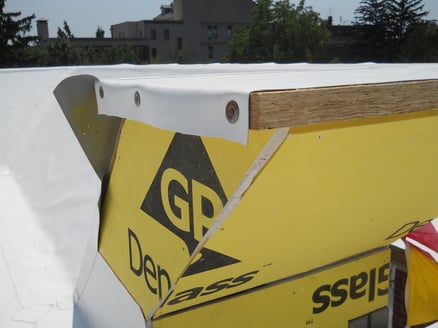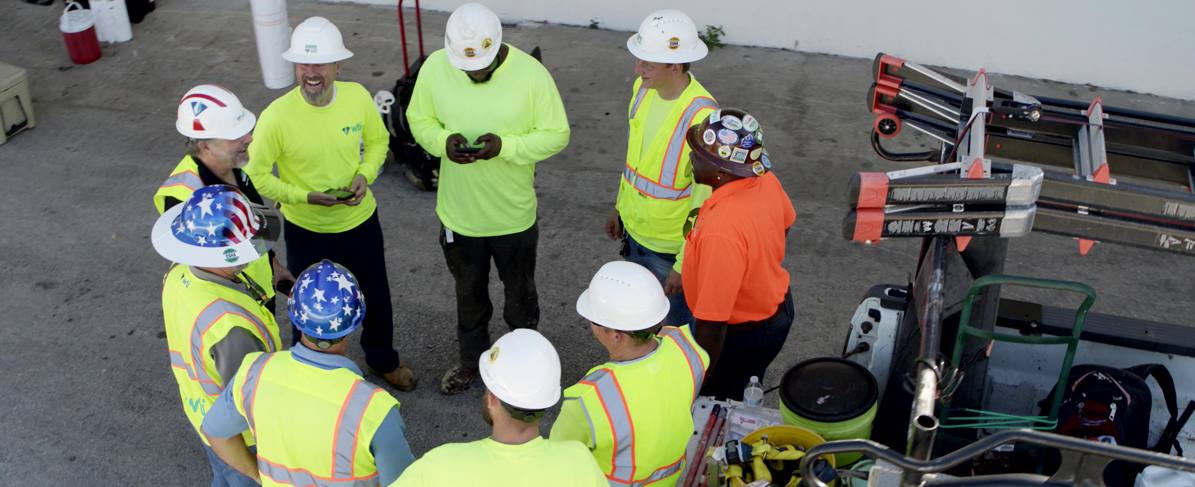Wood blocking for parapet walls can be a pain point in construction jobs due to the complex geometry often required to effectively make the transition between the roof and wall.
If walls need to be widened due to R-value requirements, architectural elements, continuous insulation or exterior finish selections, the resulting connection of various pieces of lumber can be overly difficult for the installers, causing the potential for material waste, construction delays, inefficient assembly and installation, and air and water leaks into the building.
Prebuck parapet caps are an innovative solution for creating the wood-blocking detail for parapet walls that save money and time throughout several phases of the construction process.
Let’s take a closer look at the benefits of using premium parapet caps, like those from Prebuck, to simplify construction.

What Is A Parapet Wall?
When looking at a building’s exterior wall, the portion of the wall that goes up and extends approximately 12 to 18 inches or more above the roof deck is the parapet wall.
These walls are most often found on flat or low-sloped membrane roofs of commercial buildings. Sometimes parapet walls act as a safety railing to protect building occupants or workers servicing the building, but usually, they are in place to create drainage back to the drain line.
Over time, changes in modern building design and construction methods have caused walls to widen from a standard width of 8 to 10 inches up to 16 to 22+ inches. These changes have pushed the wall out to create a 2- to 4-inch space outbound of that wall.
The finished wall — brick, metal or whatever chosen material — can then extend that space another 2 inches, creating an even wider gap that may cause moisture and wall damage if it isn’t protected properly.
Traditional Construction for Parapet Walls
In the past, builders used standard-size treated wood — for example, a 2x12, 2x6 or 2x10 piece of wood — on top of the parapet wall. blocks that functioned as makeshift safety railing and drainage.
However, due to decreasing standard wood board dimensions and increasing thickness of commercial walls, standard size wood boards no longer completely cover the top of parapet walls.
As a result, builders are forced to create a custom solution with additional lumber and fasteners for every parapet wall they build which wastes time and adds penetrations that risk air and water leaks and potential roof failure.
Knowing that most roof failures begin at the perimeter, it’s important to find the best, most efficient ways to cover and protect wall parapets that will also work in today’s ever-changing design demands.
Prebuck Parapet Caps & Their Benefits

Prebuck parapet caps cover both parapet walls and flat-roof surfaces to allow for proper drainage and prevent water from entering the wall’s interior. These caps can also be sloped for drainage to avoid the hassle of using multiple fasteners and pieces of lumber.
Product Benefits
Prebuck parapet caps serve as a stable platform for the roofing membrane attachment. Because they are engineered and designed not to split, warp, cup or curl, the roofing membrane can go right over the top of the caps. They are specially made for this purpose, so each piece is identical and provides the same level of protection to any flat roof or parapet wall.
Using this level of engineering and technology to create Prebuck parapet caps allows for a level of standardization that currently doesn’t exist in the industry.
They can easily be used on both existing and new construction. As a result, the architectural community now has the ability to specify an actual product to use to protect roof-to-wall connections in their designs.
Here are some other key benefits of Prebuck parapet caps:
- Non-corrosive to metals and no galvanic reactions
- Designed for direct contact with concrete
- Environmentally friendly and sustainable
- Contributes to LEED points — no formaldehyde or off-gases
- Insect and fungus resistant
- Free of wood knots — prevents warping or twisting
- Helps eliminate warranty issues by preventing moisture from entering wall cavities
Prebuck parapet caps have also been designed and tested to withstand winds up to 299 mph. This means that Prebuck parapet caps can withstand greater winds than the buildings they are used on. “An average house can usually withstand wind speeds of about 100 mph, or 110 mph if located in an area where strong winds are a common event,” writes eco-architect Marta Cardoner.
Designed for Fast, Easy Installation
As the only one-piece wood cap available on the market today, one of the greatest benefits of choosing Prebuck parapet caps is that they are designed for quick and easy installation.
The cap arrives at the job site as one piece, and only minimal end-cutting is needed which helps reduce waste and increase the level of safety for everyone on the site.
A master carpenter isn’t required for Prebuck cap installation. All Prebuck caps are 16-feet long and arrive with anchor openings pre-drilled so crews know exactly where to place fasteners during installation.
Installation times are extremely fast compared to using treated lumber that requires a master carpenter and at least two other employees to help.
Initial Material Costs vs. Installation Cost Savings

While the initial cost of Prebuck parapet caps is slightly higher than traditional materials, the labor savings associated with Prebuck parapet caps are significant. By cutting installation time and overall project costs, Prebuck parapet caps are a cost-effective option that provide a competitive advantage for builders and contractors when bidding for projects.
For example, using the traditional methods and installation practices, it would take a master carpenter and two other employees 8 hours to install a parapet cap cover of approximately 150 linear feet.
With Prebuck, two part-time employees (with little experience) can put up approximately 1200 linear feet in a workday, depending on the number of corners on the site.
Choose Innovative Prebuck Parapet Caps
Whether the project is retrofit or new construction, Prebuck’s one-piece wood caps are specifically designed to simplify the overall construction process, providing the best coverage and protection available for a stronger build that will last the life of the building.






